My Lip Sync Battle
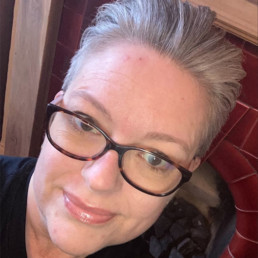
Written by Emma Ludlam
Emma has worked in Early Years for 14 years and is into her 8th year as Head of Nursery in a London Independent School. Emma has a background in the NHS and is passionate about Early Years education and development with a special interest in Disability, Diversity and Inclusion. Emma is also an EYFS Co-ordinator, dovetailing the two ends of the EYFS in her school.
I only ever knew one person with Dysphonia and Dysphagia before I was affected. My Father’s voice slowly disappeared and his swallowing was affected by Progressive Supranuclear Palsy. I always found it so distressing that he struggled to express his needs and couldn’t eat “normal” food because of the risk of choking. I never imagined I would be in a similar position in my early 40s.
In 2020, some surgery to my throat caused some nerve damage, leaving me with a paralysed vocal cord. My cord became peeled back and stuck, exposing my airway and damaging my voice.
Until you lose your voice, you have no appreciation of how much you rely on it and how much it makes you – you! As Early Years Professionals, we’re well practiced at supporting children to develop communication and language and readily support communication difficulties in the very young, those with EAL and those with a SEND that makes communication more challenging. I didn’t appreciate that I would find myself in Speech Therapy too as an adult. Voice disorders are wholly under-recognised; arguably less common than hearing or sight loss; people find it more difficult to be inclusive and more awareness is desperately needed. I am still me – just a very quiet me.
My voice is typically very weak and lacks volume. Even a simple boiling kettle can drown me out and I sound very raspy; very similar to someone with a bad dose of laryngitis. I lack expression and my tone sits a little higher than my pre-damaged voice. I have lost much of what makes me who I am. I cannot sing or laugh with any sound and the voices and accents used to read a good story, are no longer there. Dreams of reading Harry Potter to my grandchildren seem to slip further and further away. I used to love singing; (I’m not saying I was good!) whether it be in the shower, with young children or even belting out a good old Whitney Houston at karaoke – it’s something that has come very hard. I’ve upped my Lip Sync Battle game massively!
One of the more complex aspects of my condition is the accompanying dysphagia. At my worst, simply a sip of water would cause me to choke until my face was red and the tears rolled down my face. Eating is no longer an enjoyable experience; more a process of dodging aspiration and learning what you can eat and drink. Food becomes a hazard – the Squid Game of eating and drinking! Dysphagia increases risk of aspiration (food enters the trachea and lung) and can cause chest infections and pneumonia – the gift that keeps on giving! I now enjoy, safely, a partly liquidized diet and am more aware of what I can and can’t eat, but it means eating in public or outside of home is still incredibly tricky and embarrassing for me.
So how do I function? Adaption and acceptance (which is very hard to achieve) is a huge proportion of “moving on.” Waking up from anaesthesia to find yourself so changed is a real challenge. There are several aids that I couldn’t live without. My dog has been incredibly adaptive and now knows that when I grab my high decibel whistle (because I cannot call or shout) that it’s time for a walk and he has taken on board a change to hand signals well – it seems you can teach an old dog new tricks! The children I work with have been the most adaptive and that gives me real heart for the future of diversity and inclusion in all walks of life – they are our future. They have accepted my voice amplifier (a small speaker box I wear attached to a mic headset) and this helps me to be louder and is less straining for me. On most video calls, I think people assume it’s just a mic – it’s slightly less familiar when worn off screen. My other most treasured possession is my face mask from National Spasmodic Dysphonia Association which reads “Bear with me I have a voice disorder;” it allows people in shops etc an opportunity to understand my needs and help me – hearing me through a mask is impossible. I also use my iPhone to write notes for others to read.
It is essential that we take time to understand all types of communication needs. We need assistance; understand I have a lot to say and need that chance. Accepting that we cannot take speech for granted when engaging with others is a huge first step. Maintaining independence and inclusion should be our aim in all walks of life.
I challenge you to a Lip Sync Battle!
University And Chronic Illness
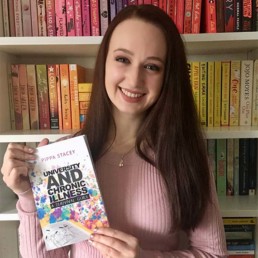
Written by Pippa Stacey
Pippa Stacey is a writer and blogger based in Yorkshire. She studied BSc Psychology in Education at the University of York, and acquired her chronic illness during the first year of her studies. As a graduate, Pippa now works in online communications in the charity sector, as well as freelance writing and blogging in a personal capacity at Life Of Pippa.
During my first year of university, I was your typical student: studying hard, partying harder, travelling the country with various sports teams and for dance competitions, volunteering, and working towards an honours degree. By the same time the following year, I was struggling to stand up on my own.
I’d been battling for answers to my mystery symptoms since the age of 15, but it was only when my health significantly relapsed and I was struck down by an onslaught of debilitating pain and fatigue, that I was finally diagnosed with Myalgic Encephalomyelitis (ME/CFS). Naturally, this all happened during my very first year of university, just as my young adult life was beginning.
With plenty of support and adjustments, I managed to continue my studies and graduated in 2016, but it wasn’t without its challenges. Adapting to life as a newly disabled student, I often felt lonely, isolated, and like nobody else in the world could understand what I was going through. I distinctly remember being shocked at what little support was available and how much I had to advocate for myself, how hard I had to fight for what I was entitled to, and how disheartening it often seemed. Being a student can be a tough time for any young person but dealing with a fluctuating health condition adds a whole new dimension of difficulty.
Despite this, my time at university formed some of the very best years of my life. I studied a subject I loved and graduated with a 2:1, met a wonderful group of friends who I still see regularly, and got to live in the beautiful city of York… where I’ve remained ever since!
It’s no secret that the world of education and employment have a long way to go before they can be described as truly inclusive. However, I hope that by sharing my story, more people in similar situations to my own will feel better informed not only about the challenges being a student can bring, but also how to tackle these head-on and have the best experience possible.
After I completed my own higher education, I knew I wanted to create a resource that would fill the gap I so painfully felt during my own student years.
My debut non-fiction book, University and Chronic Illness: A Survival Guide, is a chatty and relaxed, yet balanced and informative, resource: one that’s sincere and realistic about the challenges of studying with a fluctuating health condition, yet one which will hopefully empower future students to make informed decisions and to really get the most out of their time at university. Essentially, this book is made up of all the things I wish I’d had somebody to tell me back then.
The advice in this book comes from somebody who’s experienced the process first-hand: somebody who knows that your reasons for going to university often stretch far beyond only the lectures and studying. My book therefore strives to encompass all aspects of student life: socialising, independent living, managing your money, and what to do when things go wrong.
As well as this guide hopefully being useful to individual students with long-term conditions, I’m doing everything in my power to make sure it also reaches university, college and school support staff, to help them better understand the unique challenges such students can face. My hope is that it will help to spark some important conversations about how to ensure the education system becomes as inclusive as possible, and perhaps even one day, facilitate social change.
Above all else, however, I hope that any prospective or current chronically ill students reading this now know that they’re not alone. It can sometimes feel as though your hard work is going unnoticed, I know, but I sincerely and wholeheartedly believe in you. Your struggles are valid, and you deserve to celebrate every little victory your journey brings. Never forget that.
New Research: LYFTA Storyworlds Help Reduce Anxiety Around Meeting People From Different Backgrounds
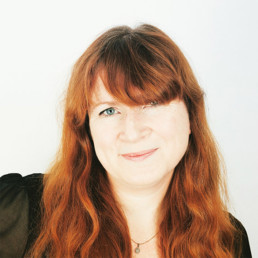
Written by Dr Harriet Marshall
Head of Educational Research at Lyfta and has been a global education advocate for over 20 years, as a teacher, researcher, consultant and education project leader.
A University of Tampere study found that virtual immersive environments that contain interactive human stories can help reduce learners’ social anxiety around meeting people from different cultural backgrounds.
A study using teaching resources from Lyfta has found that the multi-sensory and participatory nature of immersive 360° experiences led to a decrease in learners’ sense of social anxiety about meeting people from different cultural backgrounds. Engaging with new people in an immersive virtual setting gives students the opportunity to identify common interests and, as a result, develop more positive feelings towards them. Although the study was completed with undergraduate students, we are excited about the implications for engaging school-aged students with digital immersive storytelling.
The study has been published in the International Journal of Emerging Technologies in Learning. Its findings show that the reduction in social anxiety was especially significant among those who had high levels of social anxiety before the learning experience, adding to our growing understanding that immersive digital storytelling can be of particular benefit to students who get little or no opportunity to interact with those from different cultural backgrounds.
The researchers were influenced by our own school-based research (summed up in the video here), where students were shown photos of six people featured in our storyworlds, and asked how much they felt they had in common with each person, before and after exploring their stories. We found that experiencing the storyworlds led to a significant positive difference in students’ attitudes towards the people they ‘met’ there.
Our vision at Lyfta is that by the time a child leaves school, they would have had the chance to experience, and emotionally connect with, human stories from every country in the world. Lyfta stories give students the opportunity to see how interconnected and interdependent we all are. The findings of this study provide exciting evidence that Lyfta’s powerful and immersive resources have real impact in helping to nurture empathetic global citizens.
Read the University of Tampere study in full now
If you are looking to foster global citizenship and empathy in your classroom, you can Register now for free trial access to two immersive Lyfta storyworlds. https://registration.lyfta.com/
Inclusive Recruitment
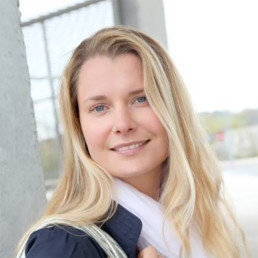
Written by Julie Reed
Julia Reed holds a Master of Arts in Education. She spent six years coaching students. She is a freelance writer now. She can handle writing on any topic.
Our society is ever-evolving. Increasingly, we are making space for, and actively listening to, traditionally underrepresented groups within our community.
Diversity is essential, as much in personal life as it is in business. Accessible and inclusive workplaces reflect an organisation’s culture and inclusive policies. That is why the concept of inclusive recruitment appeared.
Inclusive recruitment is a forward-thinking corporate practice that involves creating diverse professional environments. It’s important to note that hard and soft skills are not neglected here. They are still the vital recruitment requirements. However, there is no discrimination based on gender, age, race, or background beyond that. Inclusive workplaces offer accessibility to all.
Why are inclusive hiring practices essential?
Inclusive recruitment is in the spotlight, as it is exceptionally vital for a company’s success.
First of all, inclusive recruitment helps level the playing field for all applicants and fight against recruitment bias and other forms of discrimination.
From a business perspective, inclusive recruitment provides many advantages. Inclusivity in the hiring process is a way to make business further productive. In diverse teams, people are more collaborative, which means business is more powerful. Equality and diversity in the workforce encourage individual contribution and responsibility, thus giving birth to new ideas and raising a company to a whole new level. There is also higher retention amongst talented employees.
Why is it essential to have a diverse and inclusive workforce?
The positive impact of diversity and inclusion is no longer debatable.
Why? Let’s look.
When decision-makers and HR teams eliminate possible biases, they greatly improve the talent acquisition process. Once your business’s image is set up as an open, non-discriminative, and globally accepted firm, then a diverse range of employees prefer to become a part of your environment. That opens up a way to different perspectives and future opportunities.
So, it is a mutually beneficial interchange. Businesses help unrepresented groups build a career with no discrimination, and companies are more profitable and innovative.
What is also vital to recall is that by combining different experiences, business stakeholders can have a broad range of understandings.
Inclusive hiring practices are linked to a company’s financial success.
Why so?
Combining different experiences makes it easier for business stakeholders to understand their customers’ pains. With better understanding, companies can make more valuable propositions to meet customers’ needs as accurately as possible, showing them many shared interests between them.
Here are some relevant facts and statistics to prove the above theses:
- Above-average-diverse businesses are almost 20% more innovative than below-average-diverse ones
- 33% of ethnically diverse teams outperform less diverse teams.
- Diverse companies are 70% more likely to capture new markets.
Research also shows that inclusive teams are more innovative and are also more engaged and creative.
Having diverse teams is crucial in the global economy. What’s more, it is opening up lots of unique advantages for companies and employees. For example, hiring more talents, opening various perspectives, better business performance, and so on. Make sure you have a complete picture of the benefits of diversity and inclusion recruitment strategies!
For the full blog and toolkit, you can read more here.
Do This, Not That
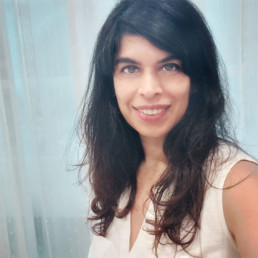
Written by Jaya Hiranandani
Jaya is an international school teacher currently based in Taipei, Taiwan. She is in awe of the unlimited potential of the learning that can happen in the classroom and, as a result, is passionate about inquiry-based learning, student and staff wellbeing, and DEI.
I am from the north of India and I believe that a combination of deeply ingrained acceptance of hierarchy and authority, assumption of best intentions and sheer luck have helped me live in a foreign country and in multiple international communities relatively unscathed from the effects of overt racism.
However, I have spent a lot of time baffled and confused by covert racism. Covert racism are often instances of racism so subtle that the victim is left wondering if they have been discriminated against. Psychologist Derald Wing Sue, Ph.D. from Teachers College Columbia University defines “racial microaggression” as “one of the “everyday insults, indignities and demeaning messages sent to people of colour by well-intentioned white people who are unaware of the hidden messages being sent to them.”
Covert acts of racism, apart from being distressing and confusing for the recipient, can be difficult for people from the dominant culture to accept “because it’s scary to them,” Professor Sue asserts, “It assails their self-image of being good, moral, decent human beings to realise that maybe at an unconscious level they have biassed thoughts, attitudes and feelings that harm people of colour.”
When I was sidelined, ignored or marginalised, the younger me was left wondering- Was it me, them or the situation? Am I being too sensitive? Did I do something wrong? Is it just an individual personality trait or is there something bigger here? Is this person incapable of trusting me just because I am different from them? Am I being sidelined because I am not interesting enough, or is the other person just having a bad day? Is this person not interested in knowing me because they think they already “know” how I am from their experiences with other people of my ethnicity?
As I grew older, patterns began to emerge and I have realised that ALL these could be true in one situation or the other and I have gotten better at deciphering between my own sensitivities and other people’s biases.
Here are six suggestions I have to develop awareness about and avoid engaging in covert racism at our educational institutions:
1. Learn how to say my name correctly, don’t hesitate to ask if needed
First things first: Yes, the names of people of colour often sound unfamiliar or sometimes, difficult to pronounce correctly. Try your best to pronounce them correctly, ask for guidance and never shorten someone’s name for your convenience before asking them first.
2. Be socially inclusive, but don’t overcompensate
You don’t need to become my friend, you just need to be friendly and considerate.
At a previous school of mine, I was unwelcome at the staff book club for many years. There was a poster about it on the staff bulletin board and when I expressed my interest to the book club leads, I was given sketchy details in a lukewarm tone with no invitation forthcoming. It was not until someone posted a well meaning invitation on the school’s online social messaging board that I was let in. I still can’t be sure why I was kept out of a monthly get-together based on a love for reading which I shared with the members of the group.
People of colour understand that you will be more comfortable with people who you can discuss your food with and can complain about things with; we know this because we do the same. Humans are wired to seek out people with similar experiences as theirs- it helped us during our cave-residing days when it was important to stick to our tribe to stay safe. We instinctively connect with people who share our culture and in my experience, a shared culture transcends shared race or ethnicity. So none of us should be under any kind of pressure to have diverse-looking close friends as long as we treat people fairly, equally and respectfully.
When we value people for their intrinsic qualities, we will naturally include diverse people in our social circles. When we look beyond people’s idiosyncrasies and external looks, we find the people we share our values and ambitions with.
3. Find diverse ways to talk to people of colour, don’t just discuss topics related to their race or country
I have a colleague who always talks to me about food, clothes or movies from my country. We have worked together for half a dozen years and it makes me wonder if she sees me as a multifaceted person that I am.
Do you feel compelled to talk to ethnically diverse people only about their country or culture? Or do you plunge into awkward silence wondering what on earth you should talk about that will not be offensive and will be politically correct? Find the middle path. Yes, I am happy to talk about which Indian restaurant in town I find the most authentic. No, I don’t want to be always seen through the lens of my ethnicity as I am so much more beyond my origins.
4. People of colour commit racist faux pas too, don’t ignore it.
Racial prejudice oc4urs both ways and though it cannot be termed as racism due to imbalances in power held by white people and people of colour, there is no reason to condone it. When you see or hear POC being racially biased, gently question their judgement and call it out.
5. Talk openly about racial, cultural, ethnic differences, don’t be colourblind
Once when I mustered the courage to mention to a white male school leader that, ambiguous as it is, covert racism in international schools does exist, I was immediately and emphatically told that “no one is out there to get me” and basically made to feel that I was being too sensitive! Denying that racism in any form exists around us is colour blindness and it is a sureshot way to shut any dialogue about it.
Colorblindedness denies the prevalence of differences based on race and though it is rooted in the goal to promote racial equality based on race-neutral policies, it has led to perpetration of systemic racism. If we pretend that race does not exist, we deny the presence of race-based inequities in our communities. Open dialogue about racial and ethnic differences at your school as and when needed. A paper published by Harvard social scientists in The Current Directions in Psychological Science states that, “people exposed to arguments promoting colour blindness have been shown to subsequently display a greater degree of both explicit and implicit racial bias.”
The responsibility of open dialogue about bias, prejudice and race falls more heavily on leaders, and it’s important that schools are now developing explicit DEI (Diversity, Equity and Inclusion) policies for all stakeholders to follow.
6. Develop self-awareness about your biases, don’t equate good intentions with correct action
It has taken me years of catching myself judging people with tattoo-covered bodies to stop making assumptions about them. I recently briefly dated a person with a wing chest tattoo and a whole arm covered with a colourful assortment of motifs and images, and I learnt intriguing stories behind some of his body art.
When we observe our own thoughts and examine our biases and assumptions, we can check ourselves every time we make a sweeping generalisation in our heads about someone based on their ethnicity or physical features.
Sometimes issues will be attributed to bias even though they may have stemmed from poor communication, differences in expectation, individual personality traits and so on. Again, be curious and ready to find out more.
Most of us genuinely want to live in a diverse and inclusive world with equity for all. However, the best intentions are futile if they are not met with the right actions. Let’s marry our best intentions with wholehearted efforts and create workplaces where no one feels marginalised because of their physical features and colour.
References:
DeAngelis, Toni 2009 Unmasking ;Racial Microaggressions’ American Psychological Association Vol. 40, (No. 2) pp. 42 <https://www.apa.org/monitor/2009/02/microaggression>
Alberta Civil Liberties Research Center (ACLRC) The Myth of Reverse Racism Accessed January 2022 <https://www.aclrc.com/myth-of-reverse-racism>
Afpelbaum, E.P., Norton, M.I., and Sommers, S.R. 2012 “Racial Color Blindness: Emergence, Practice and Implications” Current Directions in Psychological Science 21 (3) pp.206 <https://www.hbs.edu/ris/Publication%20Files/Racial%20Color%20Blindness_16f0f9c6-9a67-4125-ae30-5eb1ae1eff59.pdf>
Stephen M.R. Covey May 2021, Association of California School Administrators, Accessed January 2022 <https://content.acsa.org/six-ways-to-help-your-schools-be-more-inclusive/>
#HonestyAboutEditing - The Campaign
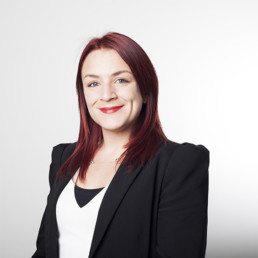
Written by Suzanne Samaka
Suzanne Samaka is a 33-year-old mum from Watford. She grew up in a single parent, working class family, which has given her a strong sense of working hard to achieve. She has spent 15 years working for a high street bank in a number of roles, mainly around relationships and people.
How can I make a difference to the mental health of our young people? That was my question and it hit me like a lightning bolt one evening. To give some context to my life, I am a stepmother to four children, have a two year old daughter and have recently given birth to my second baby. I also work full time in banking.
Sadly, for the past four years a member of our family has suffered with anorexia. It is fair to say we will never know the root cause of this and maybe neither will they, but it is apparent that they are not alone in the anxiety, depression, physical and mental health challenges that they have faced in their adolescent years. I’ve been to eating disorder in-patient clinics and I have always been shocked and saddened by how full these units are with adolescent girls and boys alike.
The pandemic has meant young people have spent more time at home and online but I must stress this isn’t only a post-pandemic problem. They are seeing more content than ever that is edited or filtered and it is having a disastrous effect on their self-esteem. The statistics don’t lie and in the UK, 9 out of every 10 girls with low body esteem, put their health at risk by not seeing a doctor or by skipping meals. A survey conducted by the Royal Society for Public Health asked 14-24 year olds in the UK how social media platforms impacted their health and well-being. The survey results found that Snapchat, Facebook, Twitter and Instagram were all linked to increased feelings of depression, anxiety, poor body image and loneliness. More than two thirds (68%) of young people surveyed support social media platforms highlighting when a photo has been manipulated.
I have been contacted by many teachers who have told me about conversations with their students who feel under pressure from social media perfection or crippling loneliness when they feel that their face doesn’t fit. I have also been contacted by countless parents who are terrified of how body conscious their children are, with ages starting from as young as 8. I have also spoken with many adults who have suffered their own mental health challenges in their adolescent years, signing the petition because they just can’t fathom how they would have survived against the odds that the youth of today are growing up with. The more people I speak to about the petition, the more it makes me want to ensure there is change, protection and honesty to give our young people a fair chance in today’s world.
Now there is one thing I need to make crystal clear. I have nothing against social media. In fact I think it can be hugely positive to all of our lives. I also have nothing against editing or filtering, it is completely each to their own. What I have a problem with is the lack of honesty, which is causing young people to believe they need to be flawless yet striving for this is damaging their mental health. Do I believe social media is the problem for the challenges in youth mental health? No. Does it exacerbate the problem? Absolutely. Mental health challenges can quickly become deeply rooted and leave scars for life. Our children and young people deserve better than that.
In trying to evoke change I have recently begun a petition on Change.org to amend the social media laws to state when an image has been filtered or digitally edited. This is now the law in a number of countries, Norway being the most recent. If it can happen there why not in the UK? What I am hoping this solution could do is to help our young people and next generation to understand that these posts aren’t real and their true self is more important, as well as their mental and physical health.
What I have realised is that each individual can help create positive change. It really does only take 30 seconds to put your name against the petition and then share with your own network. The momentum of this campaign has been amazing with several MPs on board, charity organisations and individuals who are experts in their fields. Collaboration is key here. If we all pull together we really can protect our next generation. I’m a parent. An auntie. A person who cares. That is all it takes. Somebody to do something.
Whilst my family has been my first hand experiences of mental health challenges in young people, I have just seen one too many examples to not do something about it. In the words of Emma Watson, If not me, who? If not now, when?
The link to the campaign is https://www.change.org/ChangeSocialMediaLaws
The link to the details of the survey completed by the Royal Society for Public Health is available here https://www.rsph.org.uk/static/uploaded/d125b27c-0b62-41c5-a2c0155a8887cd01.pdf
You can connect with the author – Suzanne Samaka via the following social media accounts:
- Instagram – @protectyouthmentalhealth
- Twitter – @SuzanneSamaka
- #HonestyAboutEditing
HR’s Role in Encouraging Diversity
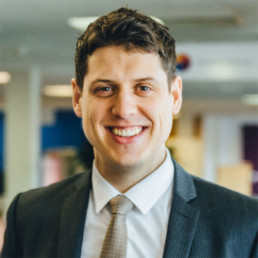
Written by Paul Holcroft
Paul Holcroft is the Managing Director at Croner.
Despite the UK being known for championing cultural and social diversity, it’s not always present in the business world.
HR departments and managers alike are legally bound to protect their employees from inequality and injustice. Yet more than a third (36%) of UK employees have experienced workplace discrimination and harassment.
Businesses should aim to promote a working environment that’s fair, diverse, and inclusive. Which increases both employee morale and business reputation.
Learn why diversity and inclusion is important, laws for applying equality, and how HR departments can help encourage workplace diversity.
What is workplace diversity?
Workplace diversity is about understanding and accepting employees from different backgrounds and values. It’s so much more than ticking ‘diversity boxes’.
HR departments must ensure their hiring procedures and policies don’t discourage people from applying due to potential prejudice or discrimination.
Having a workplace that promotes equality and diversity helps develop a culture of inclusion. Where all mindsets and talents can work cohesively with one other.
Why is diversity in the workplace important?
HR departments must legally comply with equality laws which protect their staff from ill-treatment. The principles of diversity and equality come under the nine protected characteristics, outlined in the Equality Act (2010). These are protections for:
- Age, disability, gender, marital status, pregnancy, race, religion, gender reassignment, and sexual orientation.
Hiring from a diverse pool allows employers to tap into an array of skills, backgrounds, and experiences. Individual thinking and creative exploration can accelerate economic advancement and business success.
What are the laws on workplace diversity?
Under equality and diversity laws, employers are obligated to protect their employees from workplace discrimination, harassment, and victimisation. These laws include:
- The Equality Act (2010).
- The Human Rights Act (1998).
There’s more to it than simple legal obligation. Without tackling inequality and prejudice, employees will feel unmotivated and unvalued. They could decide on quitting their jobs, or even raising discrimination claims to employment tribunals.
Either of them can lead to costly impacts on your business. You could face negative effects to your business reputation. Not to mention coughing up legal fees for compensation payment and court attendance.
How HR can encourage workplace diversity
In recent times, socio-economic values have helped grow a level playing-field for people from all walks of life. We arguably haven’t reached the optimum point yet; however, we’ve come a long way historically.
HR departments are efficiently positioned for introducing diversity to the workplace. Through training programs and HR advice for employers, building a diverse workforce is achievable within any type of company.
Here are a few steps businesses can take to encourage workplace diversity and inclusion:
Widen the talent pool boundaries
It falls on the HR department, in any business, to deal with onboarding and hiring. Looking for candidates with suitable skills and talents is normally done through recruitment pools.
But if these pools only have one type of worker, you’re denying your business so many accolades. It’s for your own benefit to utilise the recruitment process entirely.
Hiring candidates from diverse backgrounds can improve overall business balance. But be weary not to only employ them for the wrong reasons. It’s futile to look like an inclusive business aesthetically. Be sure to hire diverse candidates for fair and just reasons.
Encourage diversity on all work levels
Employing one diverse employee doesn’t mean your business stands as inclusive. A fake front like this will always crumble in the end, leading to impacts to your brand-name and productivity.
Rather than pretending, set targets of reaching employee satisfaction on all levels. And we mean all levels; not just in lower-position jobs, but as mentors and leaders.
Establish a fully-fledged pledge for diversity through equal opportunities in promotions, positions, and training.
Creating an inclusive environment
It falls on HR and managers to create a safe and comfortable working environment. But actively building a workplace that champions inclusion and diversity will grow benefits beyond imagination.
A workplace should home an atmosphere where collaboration, respect, and support for all can increase productivity and involvement.
Creating an inclusive environment is a key responsibility for HR departments. Beyond solving allegations and disputes, they need to ensure all staff members feel included and protected.
Set the precedence for diversifying businesses
On an everyday basis, employees may be at ease with workplace diversity. But it’s always worth providing information, guidance, and policies on encouraging diversity, equality, and inclusion.
Standing as a company that portrays workplace diversity will set your brand above and beyond others – internally, and on a global scale.
Establishing diversity, equality, and inclusion within your company will ultimately lead to business success – now, and in the near future.
Increasingly Visible: Being an ‘Out’ LGBTQ+ Educator
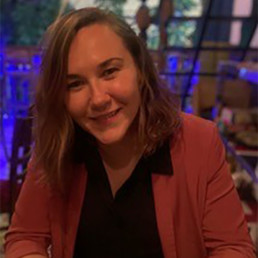
Written by Vickie Merrick
PE and History Teacher at an International School in Rome and has previously taught in Vietnam and the UK.
This post was very much inspired by Dr Adam Brett’s (@DrAdamBrett) recent talk about his PhD findings on what it means to be a visible LGBT+ educator. It is a personal reflection of my journey to becoming visible in an international teaching community.
During my ITT year there wasn’t the same talk and work that there is now about DEI, social justice and decolonising the curriculum. As a white British cis woman going through my training year, I never thought about the importance of representation. “If you can see it, you can be it” wasn’t a phrase that ever crossed my mind.
Now I realise and acknowledge that I have white privilege, I’m cisgender, I’m middle class (in that whilst my parents consider themselves working class, I went to a grammar school, I’ve gone to university twice and am currently back again completing an MSc and these experiences have afforded me the opportunity to emigrate and continue my career abroad) and I was lucky enough to be born in the Global North. There are many things about my life that mean I have an easier time than so many people in the world.
I’m also a member of the LGBTQ+ community. And I have a chronic health condition that impacts both my physical and mental health. These two areas are the only parts of my life where I have ever faced any difficulty due to my identity.
Section 28 left a strange underlying legacy on schools in England. Although I began working in schools a long time after its 2003 repeal, I heard “don’t tell the students about your personal life, it’s none of their business who you are” more than once in the staffroom. Even though my straight colleagues would quite openly talk about their partners/spouses, the insinuation was that I shouldn’t allude to being a gay woman in front of my classes.
In addition I was aware of the cultural background of my students and knew that some may not have heard positive things (or anything at all) about LGBTQ+ people at home. If I was in the same situation now I don’t think I would hide myself at the risk of causing offence (offence after all is taken not given) and would have used it as an educational opportunity to discuss embracing others regardless of their identity. But I was a new teacher concentrating on learning how to teach (something I’m still learning) and was not too concerned with being a representative of the LGBTQ+ community.
There were students who found out that I was gay and I never encountered any problems from them, if anything they were extremely positive and open about wanting to support LGBTQ+ people. On the other hand, I did once experience a student using ‘gay’ and ‘f**’ as an insult to another student in a lesson I was covering so I followed the school policy and the student waited outside for an on call member of staff. The member of staff had a chat with me and the student then brushed off the incident and sent the student back into the lesson. Again, looking back, as a more experienced teacher, I wouldn’t have let it slide. But as an NQT, I didn’t feel that I had any power to insist that this was homophobic language and should be treated in a serious way that shows the student it is not acceptable.
The final reason that I was never fully visible in my first school was more of an internal one. I teach history and PE. We’ve all heard of and perpetuated (myself included when I was a kid at school) the stereotype of the lesbian PE teacher. I didn’t want to be a stereotype. I’d previously been in the Army Reserves for a short time and found the same stereotype about female soldiers. That wasn’t my reason for leaving the Reserves but with the Army, working in sport, and being a PE teacher, it can get tiring constantly laughing with and brushing off people making jokes and having ‘banter’ about a part of who you are. And of course you laugh because they’re your colleagues and friends. They mean no harm but it’s the microaggressions that we know now to be aware of alongside our own unconscious biases that can build up and deeply impact people.
Leaving the U.K. and yearly visits to Pride Parades behind brought a change to my level of visibility. I left the U.K. with my partner and moved to Vietnam. Throughout the recruitment process we were up front about applying as a couple and didn’t face any problems when it came to contracts, housing allowances and dealing with HR in our new country. There was a surprising moment when the estate agent who was sorting out our rental apartment said the landlady was concerned that two single western women would have lots of men visiting and would receive complaints. The estate agent luckily had read the situation well and assured the landlady that she didn’t have to worry about frequent male visitors staying over…
In school itself it was a different story. We often talk about walking into our school and seeing a rainbow painted on one of the corridor walls with the words “love is love” below it. Talk about a welcoming sign. Again, at the beginning I didn’t intentionally come out to any of my students. Not through a conscious choice but I still didn’t really consider the positive impact it could have for LGBTQ+ students to see a visibly LGBTQ+ member of staff. There were other LGBTQ+ staff and couples at the school and openly LGBTQ+ students who felt they could be ‘out’ at school even if they couldn’t be at home due to the traditional values of their families. Over time, and partly due to the nature of international schools, many of the students my partner and I taught learnt that we were a couple- and exactly as it should be, they treated this as a total non-event. They treated us the same as the other teaching couples in the school. My form, however, were so excited on the day they noticed my engagement ring that I had to usher them out of the door to be on time for their first lessons because they wanted to stop and hear the full story of the proposal. And as we were getting ready to leave and say our final goodbyes in the midst of a lockdown and online learning, some of our grade 10 students were insisting that we sent wedding photos to one of our colleagues after the holidays so that they could see our dresses and hair and make-up.
In Vietnam, my visibility as an LGBTQ+ educator had increased because I felt supported by my colleagues, the school and the students. And the more visible myself and other LGBTQ+ educators were, the more I noticed the way the vast majority of our students, even though they were from all over the globe with different cultures, beliefs, values and backgrounds, treated their LGBTQ+ peers with an awareness, a kindness and acceptance. I left that school thinking that the kids are alright.
The transition into our second (well my third, as I had taught at two different schools in Vietnam) international school was where the first real challenges of being an ‘out’ educator were posed. And they were not posed by students. Recruitment during COVID was a struggle. We sent off around 40 applications and did about 15 interviews between us. We had been lucky to get jobs in Vietnam for our first international roles as it became quickly apparent that many other places were not as keen on hiring an LGBTQ+ teaching couple. Sometimes this was due to visa complications or job openings, other times it was the laws of the country (43 jurisdictions still criminalise lesbianism) and laws around housing. After a particularly challenging experience where we had offers rescinded because, after checking, the school decided their community wasn’t ready for an LGBTQ+ couple, we were feeling pretty disheartened.
Many of the schools we were applying to were IB schools. I still struggle to see how the IB, who preach about global communities and international mindedness, can promote schools and allow them to teach the IB programs when the school communities themselves are anti-inclusion.
Nearing the end of our tether with the recruitment process, my partner had an interview with a small school in Italy. Whilst they did not have a role for me, they were willing to make something part time if my partner was offered the job. The interview was a breath of fresh air. They were the first school who had asked about my partner or I as people and wanted to get an idea of us to find out how we’d fit into their community. They were upfront about wanting LGBTQ+ staff as they were aware that they had students who were part of the LGBTQ+ community and they didn’t always see themselves represented in the staff body. After accepting the jobs, my (now) wife was asked about joining the DEI team, and whilst she is careful as she knows this has become or can have the potential to be quite tokenistic in some schools, she is aware that she has the ability to do work with her team members around social justice and to help combat racism, sexism, homophobia, transphobia, ableism and other forms of discrimination within our school community.
For the first time in a school, as an educator, I have been a visible member of the LGBTQ+ community from the beginning. I am aware that I have a-sexual, transgender and non-binary students (and probably others who identify as somewhere on the gender/sexuality spectrum) and delight when they come to tell me about the first time they went to a pride parade or show me the rainbow item of clothing they have worn that day. Whilst I cannot know or understand all of their experiences, especially as a cisgender woman, I can be an empathetic listener from the large umbrella family that is LGBTQ+. The school has an LGBTQ+ club run by a member of staff who is an ally to the LGBTQ+ community and who knows that providing an inclusive space for our students is everyone’s responsibility. The community isn’t perfect and the country, with its strong religious affiliations, has laws against gay couples adopting. It is a work in progress in our school that will require buy-in from all its members to fully promote inclusivity and celebrate diversity, no matter what that looks like. But it is not tiring to be visible here. Every day when I tie up my rainbow laces (a great campaign from @Stonewall) I know the importance of showing my students that LGBTQ+ people are a part of their community, we’re here to stay and that’s very much ok.

